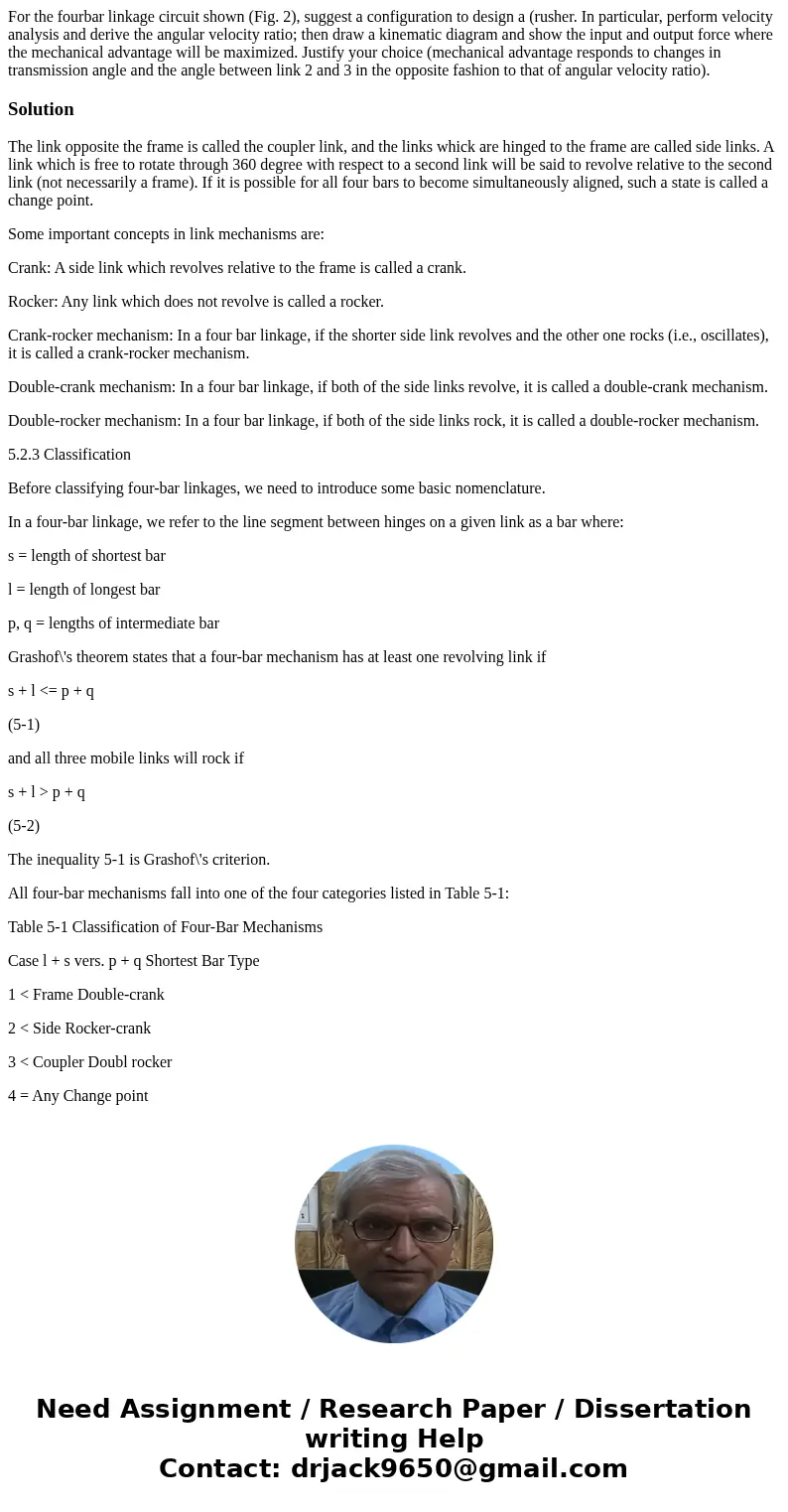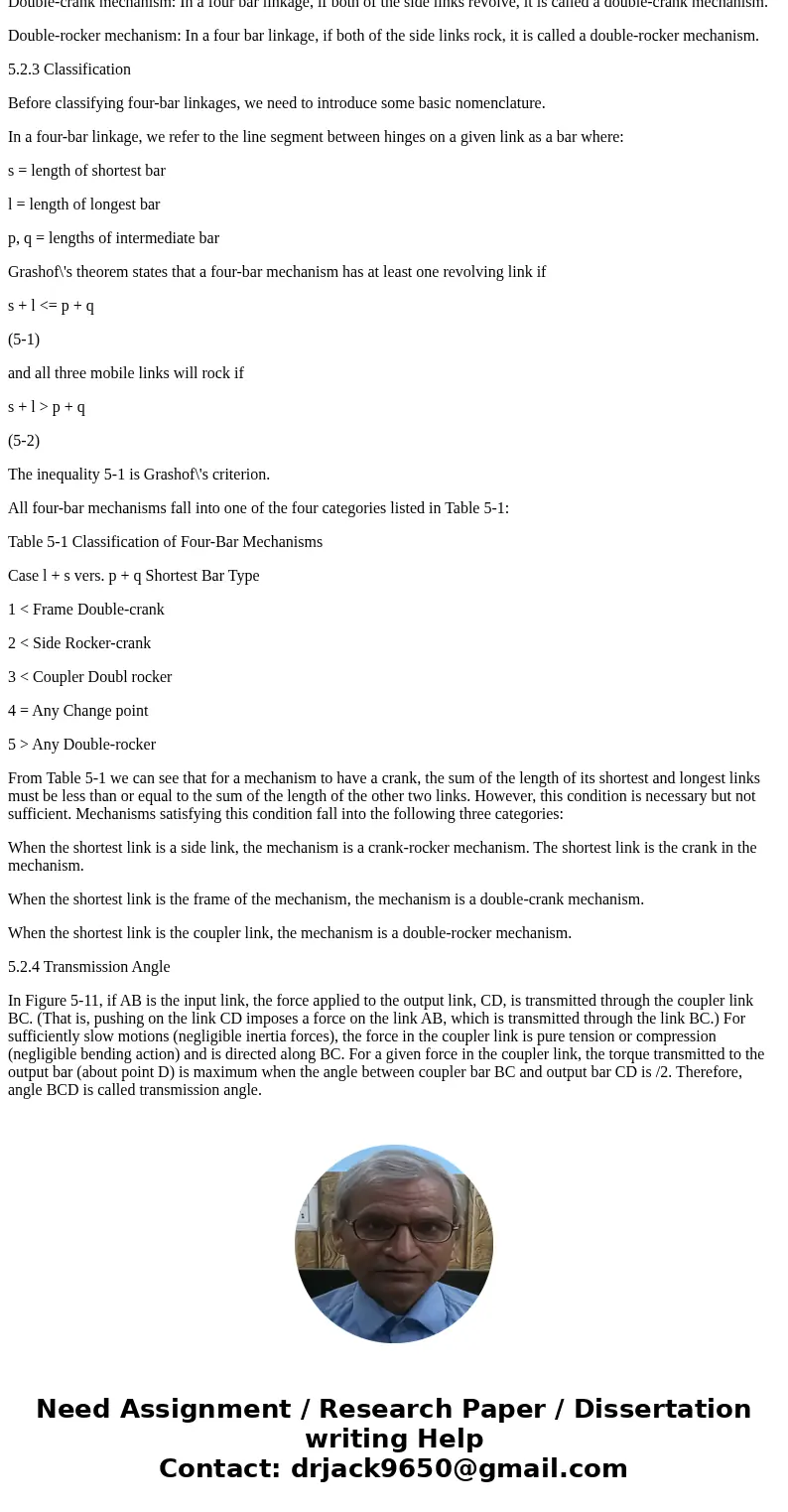For the fourbar linkage circuit shown Fig 2 suggest a config
Solution
The link opposite the frame is called the coupler link, and the links whick are hinged to the frame are called side links. A link which is free to rotate through 360 degree with respect to a second link will be said to revolve relative to the second link (not necessarily a frame). If it is possible for all four bars to become simultaneously aligned, such a state is called a change point.
Some important concepts in link mechanisms are:
Crank: A side link which revolves relative to the frame is called a crank.
Rocker: Any link which does not revolve is called a rocker.
Crank-rocker mechanism: In a four bar linkage, if the shorter side link revolves and the other one rocks (i.e., oscillates), it is called a crank-rocker mechanism.
Double-crank mechanism: In a four bar linkage, if both of the side links revolve, it is called a double-crank mechanism.
Double-rocker mechanism: In a four bar linkage, if both of the side links rock, it is called a double-rocker mechanism.
5.2.3 Classification
Before classifying four-bar linkages, we need to introduce some basic nomenclature.
In a four-bar linkage, we refer to the line segment between hinges on a given link as a bar where:
s = length of shortest bar
l = length of longest bar
p, q = lengths of intermediate bar
Grashof\'s theorem states that a four-bar mechanism has at least one revolving link if
s + l <= p + q
(5-1)
and all three mobile links will rock if
s + l > p + q
(5-2)
The inequality 5-1 is Grashof\'s criterion.
All four-bar mechanisms fall into one of the four categories listed in Table 5-1:
Table 5-1 Classification of Four-Bar Mechanisms
Case l + s vers. p + q Shortest Bar Type
1 < Frame Double-crank
2 < Side Rocker-crank
3 < Coupler Doubl rocker
4 = Any Change point
5 > Any Double-rocker
From Table 5-1 we can see that for a mechanism to have a crank, the sum of the length of its shortest and longest links must be less than or equal to the sum of the length of the other two links. However, this condition is necessary but not sufficient. Mechanisms satisfying this condition fall into the following three categories:
When the shortest link is a side link, the mechanism is a crank-rocker mechanism. The shortest link is the crank in the mechanism.
When the shortest link is the frame of the mechanism, the mechanism is a double-crank mechanism.
When the shortest link is the coupler link, the mechanism is a double-rocker mechanism.
5.2.4 Transmission Angle
In Figure 5-11, if AB is the input link, the force applied to the output link, CD, is transmitted through the coupler link BC. (That is, pushing on the link CD imposes a force on the link AB, which is transmitted through the link BC.) For sufficiently slow motions (negligible inertia forces), the force in the coupler link is pure tension or compression (negligible bending action) and is directed along BC. For a given force in the coupler link, the torque transmitted to the output bar (about point D) is maximum when the angle between coupler bar BC and output bar CD is /2. Therefore, angle BCD is called transmission angle.


 Homework Sourse
Homework Sourse